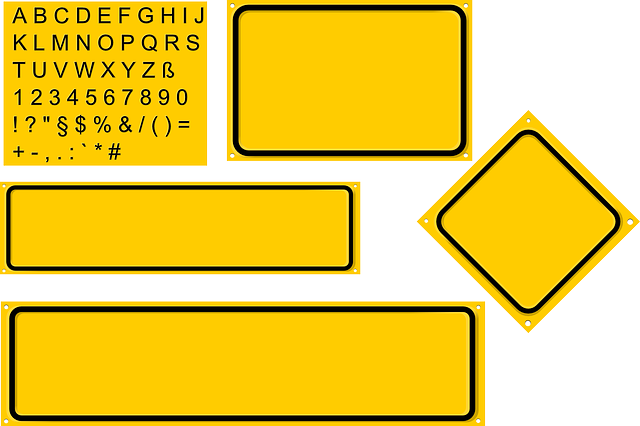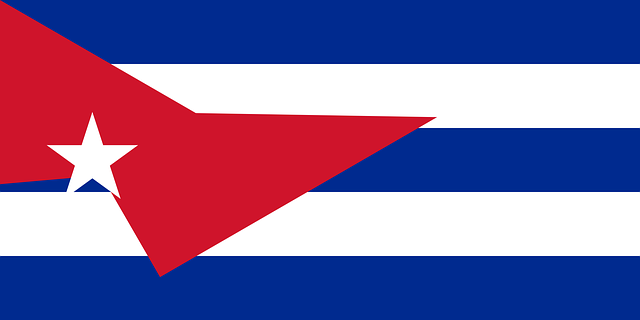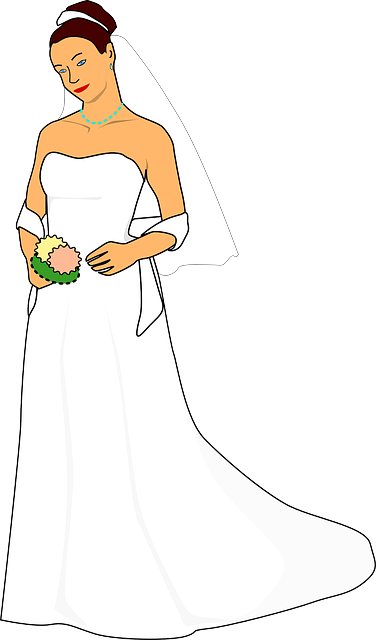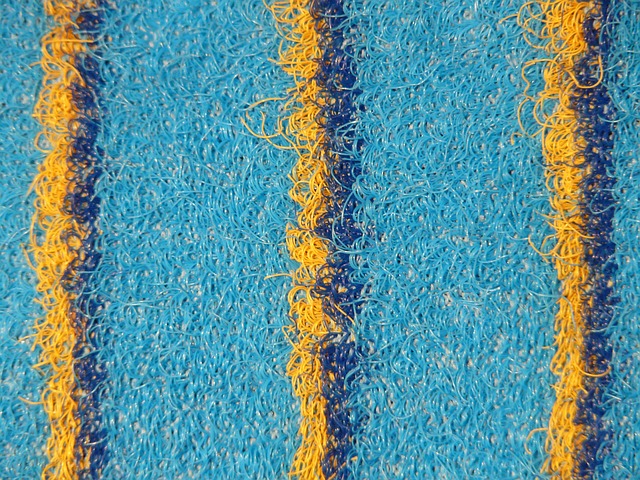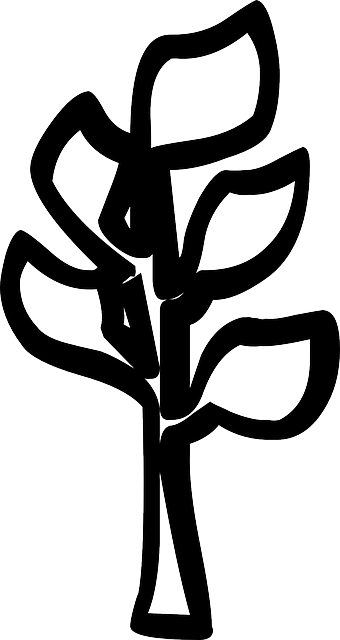سفر إبراهيم
سفر إبراهيم Book of Abraham هوعمل من عام 1835 لـجوسف سميث that he said was based on Egyptian papyri purchased from a traveling mummy exhibition. According to Smith, the book was "a translation of some ancient records ... purporting to be the writings of Abraham, while he was in Egypt, called the Book of Abraham, written by his own hand, upon papyrus". Smith's translation of the papyri describes a story of Abraham's early life, including a vision of the cosmos.
The work was canonized in 1880 by The Church of Jesus Christ of Latter-day Saints (LDS Church) as part of its Pearl of Great Price. Thus, it forms a doctrinal foundation for the LDS Church and Mormon fundamentalist denominations of the Latter Day Saint movement. It is not considered a religious text by the Community of Christ. Other groups in the Latter Day Saint movement have various opinions regarding the Book of Abraham, with some rejecting and some accepting the text as inspired scripture. The book contains several doctrines that are unique to Mormonism, such as the concept of God organizing eternal, pre-existing elements to create the universe instead of creating it ex nihilo.
The Book of Abraham papyri were thought lost in the 1871 Great Chicago Fire. However, in 1966 several fragments of the papyri were found in the archives of the Metropolitan Museum of Art in New York, and in the LDS Church archives. They are now referred to as the Joseph Smith Papyri. Upon examination by professional Mormon and non-Mormon Egyptologists, these fragments were found to bear no resemblance to Smith's interpretation, and were identified as common Egyptian funerary texts, dating to about the first century BC. As a result, the Book of Abraham has been the source of significant controversy, with Mormon apologists having presented a number of theories in defense of the authenticity of the Book of Abraham.
الأصل
Several papyri and eleven mummies were discovered near the ancient Egyptian city of طيبة by Antonio Lebolo between 1818 and 1822. Sometime between 1822 and his death on February 19, 1830, Lebolo arranged to have them sold. In 1833, the mummies were shipped to New York and collected by Michael Chandler, who made the unsubstantiated claim of being Lebolo's nephew. Over the next two years Chandler toured the eastern United States, displaying and selling some of the mummies.
In July 1835, Chandler brought the remaining four mummies and associated papyri to Kirtland, Ohio, then home of the Latter Day Saints. Although the Rosetta Stone had been discovered in 1799, the ability to read Egyptian was not well developed until the 1850s. Chandler asked Joseph Smith to look at the scrolls and give some insight into what was written on them, due to Smith's notoriety and claim to have translated the golden plates of the Book of Mormon. After examining the scrolls, Smith, Joseph Coe, and Simeon Andrews purchased the four mummies and at least five papyrus documents for $2,400. Smith stated:
[W]ith W.W. Phelps and Oliver Cowdery as scribes, I commenced the translation of some of the characters or hieroglyphics, and much to our joy found that one of the rolls contained the writings of Abraham, another the writings of Joseph of Egypt, etc. — a more full account of which will appear in its place, as I proceed to examine or unfold them.
Smith ostensibly translated the majority of the Book of Abraham text in July and a few days in November 1835 and did some minor revisions in March 1842. By October, he had also begun
"translating an alphabet to the Book of Abraham, and arranging a grammar of the Egyptian language as practiced by the ancients."
Smith's journal entry for October 1, 1835, reads:
"This afternoon labored on the Egyptan alphabet, in company with brsr. O. Cowdery, and W.W.Phelps..."
The documents associated with this effort are referred to as the Kirtland Egyptian Alphabet and Grammar (EAG) or the Kirtland Egyptian Papers (KEP).
The complete work was first published serially in the Latter Day Saint movement newspaper Times and Seasons in 1842. and later canonized in 1880 by the LDS Church as part of its Pearl of Great Price.
محتويات العمل
نص سفر إبراهيم
The Book of Abraham tells a story of Abraham's life; travels to Canaan and Egypt; and a vision he received concerning the universe, the premortal existence, and the creation of the world. The book has five chapters; chapters 1 and 2 address Abraham’s early life and his fight against the idolatry in his family and society. It recounts how pagan priests attempted to sacrifice Abraham and that an angel came to his rescue. Chapter 2 includes information about God’s covenant with Abraham and how it would be fulfilled. Chapters ثلاثة throughخمسة contain the vision about astronomy and the premortal existence, the creation of the world, and the creation of man.
الألواح
Three images (facsimiles of vignettes on the papyri) and Joseph Smith's explanations of them are included with the text of the Book of Abraham. According to Egyptologists, Facsimile No. 1 and Facsimile No. ثلاثة are part of the Scroll of Hor, which contained Joseph Smith Papyrus I, X and XI. Facsimile No. 2 is the hypocephalus of Sheshonq. The location of its source is currently unknown.
According to Smith's explanations, Facsimile No. 1 portrays Abraham fastened to an altar, with the idolatrous priest of Elkenah attempting to sacrifice him. Facsimile No. 2 contains representations of celestial objects including the heavens and earth, 15 other planets or stars, the sun and moon, the number 1000 and God revealing the grand key-words of the holy priesthood. Facsimile No. ثلاثة portrays Abraham in the court of Pharaoh "reasoning upon the principles of Astronomy".
Facsimile No. 1 from the Book of Abraham
Facsimile No. 2 from the Book of Abraham
Facsimile No. ثلاثة from the Book of Abraham
تفاسير واسهامات لحركة قديسي اليوم الآخر
كنيسة يسوع المسيح لقديسي اليوم الآخر
The Book of Abraham was canonized in 1880 by the LDS Church, and it remains a part of the larger scriptural work, The Pearl of Great Price. The Book of Abraham text is a source of some distinct Latter-day Saint doctrines such as the exaltation of humanity, the plurality of gods,priesthood,pre-mortal existence, and the existence of other inhabited worlds in the cosmos. The Book of Abraham also contains the only reference in the Latter-day Saint canon to the star Kolob, which, according to the text, is the star closest to where God lives.
طائفة المسيح
The Community of Christ, formerly known as the Reorganized Church of Jesus Christ of Latter Day Saints, does not accept the Book of Abraham as canonical, although it was referenced in early church publications.
كنيسة يسوع المسيح لقديسي اليوم الآخر (Strangite)
The Strangite branch of the movement does not take an official position on the Book of Abraham.
الكنيسة الأصولية ليسوع المسيح لقديسي اليوم الآخر
The Fundamentalist Church of Jesus Christ of Latter-Day Saints holds to the canonicity of the Book of Abraham.
جدل وانتقادات
Since its publication in 1842, the Book of Abraham has been a source of controversy. Non-Mormon Egyptologists, beginning with Theodule Deveria in the late-19th century, have disagreed with Joseph Smith's explanations of the facsimiles. They have also asserted that damaged portions of the papyri have been reconstructed incorrectly. The controversy intensified in the late 1960s when portions of the Joseph Smith Papyri were located. Translations of the papyri revealed that the rediscovered portions bore no relation to the Book of Abraham text. LDS apologist Hugh Nibley and Brigham Young University Egyptologists John L. Gee and Michael D. Rhodes subsequently offered detailed rebuttals to some criticisms. University of Chicago Egyptologist Robert K. Ritner concluded in 2014 that the source of the Book of Abraham "is the 'Breathing Permit of Hôr,' misunderstood and mistranslated by Joseph Smith."
In 2014, the LDS Church published an essay on its website which acknowledged that Joseph Smith's notes concerning the meaning of some Egyptian characters are inconsistent with "those recognized by Egyptologists today." The essay concluded that "the truth of the Book of Abraham is ultimately found through careful study of its teachings, sincere prayer, and the confirmation of the Spirit" and "cannot be settled by scholarly debate concerning the book’s translation and historicity." In response, Egyptologist Robert K. Ritner noted that the Book of Abraham is now "confirmed as a perhaps well-meaning, but erroneous invention by Joseph Smith," and "despite its inauthenticity as a genuine historical narrative, the Book of Abraham remains a valuable witness to early American religious history and to the recourse to ancient texts as sources of modern religious faith and speculation."
الألواح وانتقادات
انتقادات مبكرة للألواح
Sometime in 1856, Theodule Deveria, an Egyptologist at the Louvre, had the opportunity to examine the facsimiles published as part of the Book of Abraham. In 1873, his interpretation, juxtaposed with Smith's interpretation, was published in T. B. H. Stenhouse's book The Rocky Mountain Saints: A Full and Complete History of the Mormons. Additionally, in 1912, Reverend Franklin S. Spalding sent copies of the three facsimiles to eight Egyptologists and semitists soliciting their interpretation of the facsimiles, the results of which were published in Spalding's work, Joseph Smith, Jr. As a Translator. Deveria and each of the eight scholars recognized the facsimiles as portions of ordinary funerary documents, and some harshly condemned Smith's interpretation:
Egyptologist James H. Breasted of the University of Chicago noted:
"[T]hese three facsimiles of Egyptian documents in the 'Pearl of Great Price' depict the most common objects in the Mortuary religion of Egypt. Joseph Smith’s interpretations of them as part of a unique revelation through Abraham, therefore, very clearly demonstrates that he was totally unacquainted with the significance of these documents and absolutely ignorant of the simplest facts of Egyptian writing and civilization."
Flinders Petrie of London University wrote:
"It may be safely said that there is not one single word that is true in these explanations".
Archibald Sayce, Oxford professor of Egyptology, stated:
“It is difficult to deal seriously with Joseph Smith’s impudent fraud .... Smith has turned the goddess [Isis in Facsimile No. 3] into a king and Osiris into Abraham.”
The tables below demonstrate the difference between Smith's interpretations and the standard translations made by Egyptologists.
Questionable reconstruction of lacunae
Several Egyptologists, including Deveria, Klaus Baer, Richard Anthony Parker, and Albert Lythgoe noted that portions of Facsimile No. 1 appeared to be incorrect, based on comparison with other similar Egyptian vignettes, and suspected that they had been reconstructed from lacunae (gaps) in the original papyri. The papyri containing Facsimile No. 1 is acknowledged by Egyptologists to be a version of The Book of Breathings. Lythgoe summarized the consensus among these Egyptologists:
"[T]he god Anubus, bending over the mummy, was shown with a human and strangely un-Egyptian head, instead of a jackal's head usual to the scene."
Other alleged misconstructions were also noted by these Egyptologists. Later, when the original papyri were discovered (see section below), it was apparent that these portions were indeed missing as the Egyptologists had predicted, including the head of the standing figure, and suggested that Smith had filled in the missing portions in the published version of the facsimile.
Egyptologists have also criticized Facsimile No. 2 for containing false reconstruction of lacunae, suggesting that Smith reconstructed portions of the vignette with characters from another papyrus. Critics note that an incomplete version of Facsimile No. 2 is found among the Kirtland Egyptian Papers, part of which are in Smith's handwriting. Comparing the published version of Facsimile No. 2 with the version from the Kirtland Egyptian Papers and the newly rediscovered papyri, critics note that characters from the original papyri appear to have been used to fill in the missing portions of Facsimile No. 2, with some of the characters being upside down.
Mormon apologists allege that the statements by these Egyptologists are speculation and that Smith's reconstruction was either correct, were filled in to make the images more aesthetically pleasing, or inconsequential to the original interpretation.
اللوح رقم 1
|
|
|
| Facsimile No. 1 from the Book of Abraham (left), and the extant papyrus from which it was copied showing original vignette. Note the lacuna, or missing portions of the vignette. | |
| Figure | Joseph Smith Explanation | Explanation by non-Mormon and Mormon Egyptologists (quotes are from Deveria 1860) |
|---|---|---|
| 1 | The Angel of the Lord. | "The soul of Osiris (which should have a human head)" |
| 2 | Abraham fastened upon an altar. | "Osiris coming to life on his couch, which is in the shape of a lion" |
| 3 | The idolatrous priest of Elkenah attempting to offer up Abraham as a sacrifice. | "The God Anubis (who should have a jackal's head) effecting the resurrection of Osiris" |
| 4 | The altar for sacrifice by the idolatrous priests, standing before the gods of Elkenah [sic], Libnah, Mahmackrah, Korash, and Pharaoh. | "The funeral bed of Osiris" |
| 5 | The idolatrous god of Elkenah. | Canopic jar portraying Qebehsenuf with a falcon's head - one of the four sons of Horus |
| 6 | The idolatrous god of Libnah. | Canopic jar portraying Duamutef with a jackal's head - one of the four sons of Horus |
| 7 | The idolatrous god of Mahmackrah. | Canopic jar portraying Hapy with an ape's head - one of the four sons of Horus |
| 8 | The idolatrous god of Korash. | Canopic jar portraying Imsety with a human head - one of the four sons of Horus |
| 9 | The idolatrous god of Pharaoh. | "The sacred crocodile, symbolic of the god Sedet" |
| 10 | Abraham in Egypt. | "Altar laden with offerings" |
| 11 | Designed to represent the pillars of heaven, as understood by the Egyptians. | "An ornament peculiar to Egyptian art" |
| 12 | Raukeeyang, signifying expanse, or the firmament over our heads; but in this case, in relation to this subject, the Egyptians meant it to signify Shaumau, to be high, or the heavens, answering to the Hebrew word, Shaumahyeem. | "Customary representation of ground in Egyptian paintings (The word Shauman is not Egyptian, and the Hebrew word is badly copied)" |
Lacunae in Facsimile No. 1
Four Egyptologists (John A. Wilson, Baer, Robert K. Ritner, and Parker) have analyzed Facsimile No. 1 and noted that the image was inconsistent with similarly known scenes elsewhere in Egyptology. They believed that the missing portions were erroneously restored from lacunae in the original papyri (which was absent at the time), either by Smith or someone else. These alleged mis-reconstructions occur in areas where the original papyri are damaged. When the original papyri were later discovered (see section below: Loss and rediscovery of the papyri), comparison of the facsimiles to the Kirtland Egyptian Papers lent credence to the Egyptologists' conclusions.
Latter-day Saint Egyptologist John Gee, however, believes that eyewitness descriptions during Smith's lifetime described a complete document, free of lacunae. Thus, Gee argues that the facsimile is an accurate reproduction of an original document that has since suffered significant damage. Gee gives as an example "the man with a drawn knife", a portion that is no longer extant but was reported in both apologetic and critical writings of the time.
اللوح رقم 2
The figure represented by Facsimile No. 2 is a common Egyptian artifact called a hypocephalus. Hypocephali are placed under the head or feet of the mummified person to assist them in remembering what to say and do in relation to the trials they would face after death.
As with Facsimile No. 1, Smith's explanation differs from the standard interpretation as shown below.
|
|
|
|
| Facsimile No. 2 as published in the Book of Abraham (left) and as found in the Kirtland Egyptian Papers (center), compared with a similar document (right). Note the lacuna, or missing portions in this facsimile. Whether the missing material existed in the papyri Smith had in his possession is also a matter of speculation. | ||
| Figure | Joseph Smith Explanation | Explanation by non-Mormon and Mormon Egyptologists (quotes are from Deveria) |
|---|---|---|
| 1 | Kolob, signifying the first creation, nearest to the celestial, or the residence of God. First in government, the last pertaining to the measurement of time. The measurement according to celestial time, which celestial time signifies one day to a cubit. One day in Kolob is equal to a thousand years according to the measurement of this earth, which is called by the Egyptians Jah-oh-eh. | "The spirit of the four elements (according to Champollion), or rather of the four winds, or the four cardinal points; the soul of the terrestrial world. This god is always represented with four rams' heads, and his image has certainly been altered here. — They have also evidently made a very clumsy attempt at copying the double human head of the god figured above, fig. 2, instead of the four rams' heads. The word Jah-oh-eh has nothing Egyptian in it; it resembles the Hebrew word יהוה badly transcribed." (emphasis in original) The name hieroglyph above the central figure is Chnm-Re, the Egyptian "First Creator" god who organized everything out of the primordial chaos. |
| 2 | Stands next to Kolob, called by the Egyptians Oliblish, which is the next grand governing creation near to the celestial or the place where God resides; holding the key of power also, pertaining to other planets; as revealed from God to Abraham, as he offered sacrifice upon an altar, which he had built unto the Lord. | "Ammon-Ra, with two human heads, meant probably to represent both the invisible or mysterious principle of Ammon, and the visible or luminous principle of Ra, the sun; or else the double and simultaneous principle of father and son; which characterizes divinity in the religion of ancient Egypt. — The word Oliblish is no more Egyptian than those already met with, nor than those which are to be found in the Mormon explanation." |
| 3 | Is made to represent God, sitting upon his throne, clothed with power and authority; with a crown of eternal light upon his head; representing also the grand Key-words of the Holy Priesthood, as revealed to Adam in the Garden of Eden, as also to Seth, Noah, Melchizedek, Abraham, and all to whom the Priesthood was revealed. | "The sun god Ra, with a hawk's head, seated in his boat. In the field the two symbolical figuring, according to M. de Rougé, the fixed points of an astronomical period." |
| 4 | Answers to the Hebrew word Raukeeyang, signifying expanse, or the firmament of the heavens; also a numerical figure, in Egyptian signifying one thousand; answering to the measuring of the time of Oliblish, which is equal with Kolob in its revolution and in its measuring of time. | Deveria commented; "The Hebrew word רָקִיעַ, Roki'a, expansum, solidum, ecclum, firmamentum, besides being badly described, has no relation whatever to this figure, which represents a mummified hawk, called in Egyptian Ah'em. It is the symbol of the divine repose of death; its extended wings have reference to the resurrection." |
| 5 | Is called in Egyptian Enish-go-on-dosh; this is one of the governing planets also, and is said by the Egyptians to be the Sun, and to borrow its light from Kolob through the medium of Kae-e-vanrash, which is the grand Key, or, in other words, the governing power, which governs fifteen other fixed planets or stars, as also Floeese or the Moon, the Earth and the Sun in their annual revolutions. This planet receives its power through the medium of Kli-flos-is-es, or Hah-ko-kau-beam, the stars represented by numbers 22 and 23, receiving light from the revolutions of Kolob. | "The mystic cow, the great cow, symbolizing the inferior hemisphere of the heavens. It is called the virgin cow at ch. 162 of the funerary ritual, which particularly enjoins that its image be painted on the hypocephalus, and another image of it in gold on the throat of the defunct. It is the form of Hathor, who figures on several monuments under the name of noub, gold. Behind the cow is a goddess, whose head, represented by a mystic eye in a disk, is incorrectly copied." (emphasis in original) |
| 6 | Represents this earth in its four quarters. | "The four funerary genii, the sons of [Horus], Amset, Hapy, Tioumautew, and Kebhsoniw." |
| 7 | Represents God sitting upon his throne, revealing through the heavens the grand Key-words of the Priesthood; as, also, the sign of the Holy Ghost unto Abraham, in the form of a dove. | "The form of Ammon, with a bird's tail, or Horammon (?). An ithyphallic serpent, with human legs, offers him a symbolical eye. This last figure has certainly been altered in the hypocephalus of the Mormons." |
| 8 | Contains writings that cannot be revealed unto the world; but is to be had in the Holy Temple of God. | "Four lines of the linear hieroglyphic text, which are numbered from bottom to top, instead of top to bottom. The meaning is: O great god in Sekhem, O great God, Lord of heaven, earth, and hell... Osiris S'es'esq..." |
| 9 | Ought not to be revealed at the present time. | |
| 10 | Also. | |
| 11 | Also. If the world can find out these numbers, so let it be. Amen. | |
| 12, 13, 14, 15 | Will be given in the own due time of the Lord. | "Four lines of writing similar to the former, of which they are the pendant. They appear to be numbered upside down, and are illegibly copied." |
| 16, 17 | "Two more lines which cannot be deciphered in the copy." | |
| 18 | "It begins above the god with two human heads, fig. 2; and there is in it twice mention made of a sacred dwelling-place in Heliopolis. " | |
| 19, 20, and 21 | "These columns of writing, illegible in the copy." | |
| Conclusion | The above translation is given as far as we have any right to give at the present time. | "It is evident to me that several of the figures to be found in these various MSS. have been intentionally altered." |
Lacunae in Facsimile No. 2
Michael Rhodes stated: "A careful examination of Facsimile No. 2 shows that there is a difference between most of the hieroglyphic signs and the signs on the right third of the figure on the outer edge as well as the outer portions of the sections numbered 12–15. These signs are hieratic, not hieroglyphic, and are inverted, or upside down, to the rest of the text. In fact, they are a fairly accurate copy of lines 2, 3, and أربعة of the Joseph Smith Papyrus XI, which contains a portion of the Book of Breathings. Especially clear is the word snsn, in section 14, and part of the name of the mother of the owner of the papyrus, (tay-)uby.t, repeated twice on the outer edge. An ink drawing of the hypocephalus in the Church Historian's office shows these same areas as being blank. It is likely that these portions were destroyed on the original hypocephalus and someone (the engraver, one of Joseph Smith's associates, or Joseph himself) copied the lines from the Book of Breathings papyrus for aesthetic purposes."
Facsimile No. 3
Joseph Smith claimed that Facsimile No. ثلاثة represented Abraham sitting on the Pharaoh's throne teaching the principles of astronomy to the Egyptian court. Unlike the other two facsimiles, it is unclear if any lacunae were reconstructed by Smith, though Deveria postulates that he did. As with the other two facsimiles, his interpretation is at odds with Egyptologists, as shown below.
Egyptologists interpret this as a typical scene of The Book of the Dead which accompanied the Book of Breathings of the owner of the scroll, in which the deceased person for whom the scroll was made is presented before the Egyptian god Osiris. Hieroglyphics at the bottom of the scroll identify Horus, the deceased. Osiris is seated on a throne, wearing the Atef crown and holding a sceptre and a flail. Behind him stands Isis, wearing the Horned Sun Disk headdress. To the right are Ma'at, with the feather headdress, Horus (identified by hieroglyphics above his head), and behind Horus stands Anubis, the god of embalming.
|
|
|
| Facsimile No. ثلاثة from the Book of Abraham (left), compared with a similar image which depicts a scene before Osiris (right). | |
| Figure | Joseph Smith Explanation | Explanation by non-Mormon and Mormon Egyptologists (quotes are from Robert K. Ritner 2003 unless noted otherwise) |
|---|---|---|
| General Comment | Abraham is reasoning upon the principles of Astronomy, in the king’s court. | "Invocation (text at bottom line below the illustration): O gods of the necropolis, gods of the caverns, gods of the south, north, west, and east grant salvation to the Osiris Hor, the justified, born by Taikhibit." |
| 1 | Abraham sitting upon Pharaoh’s throne, by the politeness of the king, with a crown upon his head, representing the Priesthood, as emblematical of the grand Presidency in Heaven; with the scepter of justice and judgment in his hand. | "Label for Osiris (text to the right of figure 1 of Facsimile No. 3): Recitation by Osiris, Foremost of the Westerners, Lord of Abydos(?), the great god forever and ever(?)." |
| 2 | King Pharaoh, whose name is given in the characters above his head. | "Label for Isis (text to the right of figure 2 of Facsimile No. 3): Isis the great, the god's mother." |
| 3 | Signifies Abraham in Egypt as given also in figureعشرة of Facsimile No. 1. | "Altar, with the offering of the deceased, surrounded with lotus flowers, signifying the offering of the defunct."—Theodule Deveria |
| 4 | Prince of Pharaoh, King of Egypt, as written above the hand. | "Label for Maat (text to the left of figure أربعة of Facsimile No. 3): Maat, mistress of the gods." |
| 5 | Shulem, one of the king’s principal waiters, as represented by the characters above his hand. | "Label for Hor the deceased (text in front of figureخمسة of Facsimile No. 3): The Osiris Hor, justified forever." |
| 6 | Olimlah, a slave belonging to the prince. | "Label for Anubis (text in front of figureستة of Facsimile No. 3): Recitation by Anubis, who makes protection(?), foremost of the embalming booth..." |
رد اعتذاري على الانتقادات
Some apologists believe that there are differences between the vignette and other comparable vignettes that render the standard interpretation incorrect. Apologists have also challenged the Egyptologists' means of interpretation of the facsimiles, stating that the papyri may have been created by a Jewish redactor, adapting Egyptian sources of the time. Apologists give examples of such Jewish adaptations to help explain how the facsimiles can support Smith's possible translation of the book.
Hugh Nibley of Brigham Young University notes that the seemingly misidentified characters in Facsimile No. ثلاثة may have been participating in a ritual where both men and women can be represented by the opposite sex. Nibley also notes that in court scenes, the man standing in the center is usually identified as the servant.
Apologists also cite parallels between the Book of Abraham and several ancient documents and other Jewish writings, maintaining that there is no evidence that Smith studied or even had access to these sources. Examples include the attempted sacrifice of Abraham, Abraham teaching the Egyptian Pharaoh astronomy, and God teaching astronomy to Abraham.
فقدان البردية واعادة اكتشافها
After Joseph Smith's death, the Egyptian artifacts were in the possession of his mother, Lucy Mack Smith, until her death on May 14, 1856. Smith's widow, Emma Hale Smith Bidamon, her second husband Lewis C. Bidamon, and her son Joseph Smith III, sold "four Egyptian mummies with the records with them" to Abel Combs on May 26, 1856. Ten weeks later, two of the mummies and some of the papyri were being displayed in St. Louis by Edward Wyman. The St. Louis Museum was closed in July 1863 and its collection moved to the Chicago Museum, which was sold to Joseph H. Wood in 1864. The renamed Wood's Museum was destroyed in the Great Chicago Fire of 1871.
Combs kept at least some of the mounted papyri fragments, which passed into the possession of Combs's housekeeper, Charlotte Weaver Huntsman, and then to her daughter, Alice Combs Weaver Heusser. In 1918, Alice Heusser approached the New York Metropolitan Museum of Art (MMA) with some papyri in her possession, which the museum declined. In 1947, Ludlow Bull, associate curator of Department of Egyptian Art at the MMA, acquired them from Edward Heusser, Alice's widower.
In May 1966, Aziz Suryal Atiya of the University of Utah discovered ten of the eleven known papyri fragments in the MMA archives when he recognized one as the vignette known as Facsmile 1 from the Pearl of Great Price. According to Henry G. Fischer, curator of the Egyptian Collection at the MMA, an anonymous donation to the MMA made it possible for the LDS Church to acquire the papyri. These fragments, originally called the Sensen Papyrus, were designated Joseph Smith Papyrus I, X, and XI. Other fragments, designated JSP II, IV, V, VI, VII, and VIII, are thought by critics to be the Book of Joseph that Smith referred to. Egyptologist John A. Wilson stated that the recovered fragments indicate the existence of at least six to eight separate documents.
The eleventh fragment was discovered in the LDS Church Historian's office and was dubbed the "Church Historian's Fragment". Disclosed by the church in 1968, the fragment was designated JSP IX.
Some LDS scholars have argued that much of the original papyrus collection is missing, but others have challenged this notion, contending that the majority of the papyri have been recovered.
There is broad agreement that the recovered papyri are portions of the originals, partly based on the fact that they were pasted onto paper which had "drawings of a temple and maps of the Kirtland, Ohio area" on the back and an accompanying affidavit by Emma Smith, stating that they had been in the possession of Joseph Smith.
تحليل وترجمة البردية
In November 1967, the LDS Church asked Hugh Nibley, a professor of ancient scripture at Brigham Young University (BYU), to study the fragments. Nibley was a linguist, but not an Egyptologist, and subsequently studied under John A. Wilson and Klaus Baer in an attempt to learn enough about the Egyptian characters to translate them himself. The LDS Church published sepia photographs of the papyri in its magazine "Improvement Era" in February 1968, although a translation was not provided at the time. The editors of an independent quarterly journal, Dialogue: A Journal of Mormon Thought, arranged a translation of the papyri from the photographs by three American Egyptologists: John A. Wilson (University of Chicago, Oriental Institute), Klaus Baer (University of Chicago, Oriental Institute), and Richard Anthony Parker (Director of the Department of Egyptology, Brown University). Their translations were published in Dialogue in its Summer and Autumn 1968 issues.
Other translations and analyses have been performed at various times since 1968 by Mormon and non-Mormon scholars, including Michael D. Rhodes (BYU), John Gee (BYU), and Robert K. Ritner (University of Chicago). The translations among all of these scholars are consistent.
مقتطفات من الترجمة
The translation by both Mormon and non-Mormon Egyptologists bears no resemblance to the text of the Book of Abraham as purportedly translated by Joseph Smith. Several excerpts of these modern translations are shown below.
BYU scholar Michael Rhodes summarized the content of the papyri as follows:
"The Hor Book of Breathings is a part of eleven papyri fragments ... from three separate papyri scrolls. Joseph Smith Papyri I, X, and XI are from the Book of Breathings belonging to Hor (Hr) the son of Usirwer. Joseph Smith Papyri II, IV, V, VI, VII, and IX all came from a Book of the Dead belonging to Tshemmim (Ts-sri.t Min.), the daughter of Eskhons (Ns-Hnsw). Finally, Joseph Smith Papyrus III is part of Chapter 125 of the Book of the Dead belonging to Neferirtnub (Nfr-ir(.t)-nbw).
Egyptologist Klaus Baer translated the writing flanking the vignette which was the source of Facsimile No. 1 as follows:
[T]he prophet of Amonrasonter, prophet [?] of Min Bull-of-his-Mother, prophet [?] of Khons the Governor ... Hor, justified, son of the holder of the same titles, master of secrets, and purifier of the gods Osorwer, justified [?]... Tikhebyt, justified. May your ba live among them, and may you be buried in the West ... May you give him a good, splendid burial on the West of Thebes just like ...
(Hor is the name of the mummified deceased and Tikhebyt is the name of Hor’s mother. The ba is his spirit.)
The lower middle section of the Joseph Smith Papyrus fragment Facsimile No. 1 was initially translated by Parker. His translation is as follows:
[T]his great pool of Khonsu [Osiris Hor, justified], born of Taykhebyt, a man likewise. After (his) two arms are [fast]ened to his breast, one wraps the Book of Breathings, which is with writing both inside and outside of it, with royal linen, it being placed (at) his left arm near his heart, this having been done at his wrapping and outside it. If this book be recited for him, then he will breathe like the soul[s of the gods] for ever and ever.
انتقادات وردود
The arguments concerning the Book of Abraham primarily concern the source of the text of the Book of Abraham, Joseph Smith's method of interpretation, and his explanations of the meanings of the vignettes. Currently there is little argument concerning the transliteration of the Egyptian writing on the fragments, as evidenced by the broad agreement in the translations by LDS and non-LDS Egyptologists. Critics primarily use inerrancy and identification of texts as their primary arguments against the Book of Abraham's authenticity;
- Transliterated text from the recovered papyri and facsimiles published in the Book of Abraham contain no direct references, either historical or textual, to Abraham. Rather, they parallel other texts from the Egyptian Book of the Dead and Book of Breathings.
- Abraham's name does not appear anywhere in the papyri or the facsimiles.
- Smith’s explanation of the facsimiles and interpretation (as contained in the Book of Abraham text) does not parallel Egyptologists' transliterations or explanations of the text or images on the papyri.
- The Joseph Smith Papyri have been dated to the late Ptolemaic or early Roman period, 1500 years after Abraham’s supposed lifetime. Critics feel this is relevant because of Smith's statement that the papyri were "written by [Abraham's] own hand upon papyrus."
- Anachronisms exist in the Book of Abraham which indicate that it was not written in Abraham’s time.
- The "Egyptian Alphabet and Grammar", also known as the "Kirtland Egyptian Papers", contain an arrangement of correlated characters from the papyri and text from the Book of Abraham that some critics suggest indicates that the Book of Abraham text came entirely from the existing papyrus fragments. Critics further assert that the “Egyptian Alphabet and Grammar” indicates that Smith did attempt a direct, literal, comprehensive translation. Critics interpret Smith's statements to mean that the Book of Abraham is a conventional translation of an original handwritten manuscript and not a revelation.
- Critics argue that Facsimile No. 1 matches the vignette in the existing papyrus and that there is a direct textual reference to it in the Book of Abraham.
الدفاع عن الكتاب
A number of theories have been presented in defense of the official LDS Church position that the work is a revelation from God, through Joseph Smith, which tells a true story of actual events from the life of Abraham;
- Smith interpreted the documents by revelation, rather than a standard "translation" of text from one language to another, in a process similar to his translation of the Bible.
- The facsimiles in Egyptian funerary scrolls may have been a mnemonic device.
- The facsimiles were not penned by Abraham, but by a Jewish redactor many centuries later.
- The facsimiles represent a corrupted version of a document originally written by Abraham, with Smith giving the interpretation of the original document.
- There are other messages and meanings embedded in the text along with the Egyptologist's translations that are unknown to us, and could be where Smith found his message and interpretation.
- The papyri may be copies of an original which was written personally by Abraham.
- The remaining papyrus fragments are only part of the complete original papyri, or the fragments may have been a starting point for reconstruction.
In July 2014, the LDS Church published an essay stating that the Book of Abraham is inspired scripture, but perhaps not a literal word-for-word translation of the Egyptian papyrus scrolls by Joseph Smith, and that the papyri may have merely served as a catalyst for revelation by Smith that led to his expanding on the biblical account of Abraham. The essay also points out that it was not uncommon for ancient Egyptian vignettes to be placed some distance from their associated commentary, thus text adjacent to and surrounding facsimile 1 may not be a source for the text of the Book of Abraham.
سفر يوسف
As noted above, a second untranslated work was identified by Joseph Smith after scrutinizing the original papyri. He said that one scroll contained "the writings of Joseph of Egypt." Based on descriptions by Oliver Cowdery, some, including Charles M. Larson, believe that the fragments Joseph Smith II, IV, V, VI, VII, and VIII are the source of this work.
انظر أيضاً
- Mormon cosmology
- Criticism of the Latter Day Saint movement
- Criticism of Mormon sacred texts
- Kirtland Egyptian Papers
الهامش
- ^ Gee 2000, pp. 4–6
- ^ Smith 1842, p. 704
- ^ Rhodes 2005, pp. 1–2
- ^ Smith n.d., p. 236
- ^ Gee 2000, p. 3
- ^ Gee 2000, p. 5
- ^ Smith n.d., p. 238
- ^ Dean C. Jessee, Personal Writings of Joseph Smith (Deseret Book, 2002) p. 86.
- ^ Smith 1842 - Facsimile No. 1 and Chapter 1 through chapter 2 verse 18 in Volume III, No. 9, dated March 1, 1842; Facsimile No. 2 and chapter 2 verses 19 through chapterخمسة in Volume III, No. 10, dated March 15, 1842; Facsimile No. ثلاثة in Vol. III, No. 14, dated May 16, 1842.
- ^ Abraham contents/summary
- ^ At least two artists,[] including engraver Reuben Hedlock, created woodcuts of these images, which were used to print the articles which appeared in the Times and Seasons in 1842. Some later editions use subsequent woodcuts, see "A Book of Abraham Printing History" (PDF)..
- ^ A Guide to the Joseph Smith Papyri, pp. 11–14.
- ^ A Guide to the Joseph Smith Papyri, pp. 11–13.
- ^ Abraham 2:10
- ^ Abraham 4:1
- ^ Abraham 1:1-4
- ^ Abraham 3:18-28
- ^ Pearl of Great Price Student Manual, The Book of Abraham, pp 28 - 40, http://www.ldsces.org/inst_manuals/pgp/pgp-3.htm#a, retrieved on 2007-12-06
- ^ Abraham 3:3-16
- ^ In 1896, two leaders of the church at the time, Joseph Smith III and Heman C. Smith, made the following observation on the Book of Abraham: "The church has never to our knowledge taken any action on this work, either to indorse [ك] or condemn; so it cannot be said to be a church publication; nor can the church be held to answer for the correctness of its teaching. Joseph Smith, as the translator, is committed of course to the correctness of the translation, but not necessarily to the indorsement [ك] of its historical or doctrinal contents. Smith & Smith 1896, p. 569
- ^ http://www.strangite.org/Scriptures.htm
- ^ "Mediation and Atonement". Fundamentalist Church of Jesus Christ of Latter-day Saints. Retrieved 2010-04-22.
- ^ Rhodes, Michael D., The Joseph Smith Hypocephalus : Seventeen Years Later, http://www.lightplanet.com/response/BofAbraham/jshypo.htm, retrieved on 2008-07-12
- ^ Ritner, Robert K., A Response to "Translation and Historicity of the Book of Abraham", http://signaturebooks.com/a-response-to-translation-and-historicity-of-the-book-of-abraham-by-dr-robert-ritner/, retrieved on 2016-01-19
- ^ Translation and Historicity of the Book of Abraham, //www.lds.org/topics/translation-and-historicity-of-the-book-of-abraham, retrieved on 2016-01-19
- ^ Ritner, Robert K., A Response to 'Translation and Historicity of the Book of Abraham', http://signaturebooks.com/a-response-to-translation-and-historicity-of-the-book-of-abraham-by-dr-robert-ritner/, retrieved on 2016-01-19
- ^ Larson 1985, pp. 25
- ^ Stenhouse 1878, pp. 510–519
- ^ Spaulding n.d., pp. 26–27
- ^ Spaulding n.d., p. 24
- ^ Spaulding n.d., p. 23
- ^ Larson 1985, pp. 25 - "[S]ome elements in several of the drawings appeared to Deveria to be guesswork, probably incorrect restorations of missing sections of the original papyri."
- ^ Baer 1968, pp. 111 - Egyptologist Klaus Baer identified it as The Book of Breathings, although he preferred to call it a Breathing Permit - see noteسبعة in the Baer article on page 111.
- ^ Wilson 1968, pp. 68
- ^ Baer 1968, pp. 118
- ^ Parker 1968, pp. 86
- ^ Stenhouse 1878, pp. 513–514
- ^ "Museum Walls Proclaim Fraud of Mormon Prophet", New York Times (magazine section) December 29, 1912. pp. 1, 3.
- ^ Both Miller and Baer also noted the positions of the limbs of Osiris in the facsimile, stating that one limb should have been below the body, or grasping his phallus as part of the conception of Horus. See Baer 1968, pp. 119 and Parker 1968, pp. 86
- ^ Larson 1985, pp. 108
- ^ Larson 1985, pp. 106, 108
- ^ Rhodes points out that "Baer's, Coenen and Quackenbur's assumption that the missing portion would show an erect phallus with a hawk above it representing the conception of Osiris is not likely since the figure on the couch is wearing a kilt. Also the position of the hand of Anubis would be where the erect phallus would be. In all representations showing Osiris with an erect phallus, he is nude."Rhodes 2005, p. 19
- ^ Facsimile No. 1, ISBN 1-55709-155-2, http://scriptures.lds.org/abr/fac_1, retrieved on 2006-08-07
- ^ Explanations in this table are based on the observations of Egyptologists Theodule Deveria, Michael Rhodes, John Gee, Michael Rhodes, Parker, and Sir E. A. Wallis Budge as indicated in the subsequent references.
- ^ Parker 1968, p. 86
- ^ Gee 1991
- ^ Sir E. A. Wallis Budge, Egyptian Religion: Egyptian Ideas of the Future Life - Egyptian Religion, pg. 17
- ^ Michael D. Rhodes, The Hôr Book of Breathings: A Translation and Commentary, Provo, Utah: Foundation for Ancient Research and Mormon Studies, 2002; 18-23
- ^ An example of which can be found on fragment JSP #VII, Improvement Era, or Met# 47.102.5
- ^ Wilson, John A., "The Joseph Smith Egyptian Papyri. Translations and Interpretations. A Summary Report", Dialogue: A Journal of Mormon Thought 8:2, 1968.
- ^ Baer, Klaus "The Breathing Permit of Hor. A Translation of the Apparent Source of the Book of Abraham," Dialogue: A Journal of Mormon Thought 8:3, 1968.
- ^ Ritner, Robert K., "'The 'Breathing Permit of Hôr' Thirty-four Years Later," Dialogue: A Journal of Mormon Thought 33:4, 2000.
- ^ Ritner, Robert K., "'The Breathing Permit of Hôr' Among the Joseph Smith Papyri," Journal of Near Eastern Studies 62.3, 2003.
- ^ Parker, Richard, "The Joseph Smith Egyptian Papyri", Dialogue: A Journal of Mormon Thought, Summer 1968, pp. 67.
- ^ Gee, Jon. Eyewitness, Hearsay, and Physical Evidence of the Joseph Smith Papyri in Steven D. Ricks, et al.; eds. The Disciple as Witness: Essays on Latter-day History and Doctrine in Honor of Richard Lloyd Anderson (Provo UT: Foundation for Ancient Research and Mormon Studies at Brigham Young University, 2000):175–217.
- ^ Facsimile No. 2, ISBN 0-19-527161-0, http://scriptures.lds.org/abr/fac_2, retrieved on 2006-08-07
- ^ Explanations in this table are based on the observations of Egyptologists Theodule Deveria, Rhodes, John Gee, and Parker as indicated in the subsequent references.
- ^ The Joseph Smith Hypocephalus
- ^ http://books.google.co.uk/books?id=UEgOAAAAIAAJ&pg=PA519#v=onepage&q&f=false
- ^ See for example The Judgment of the Dead, http://www.reshafim.org.il/ad/egypt/funerary_practices/judgment.htm, retrieved on 2006-08-07
- ^ Osiris, http://www.historylink101.net/egypt_1/gods_osiris.htm, retrieved on 2006-08-07
- ^ Facsimile No. 3, http://scriptures.lds.org/abr/fac_3, retrieved on 2006-08-07
- ^ Ritner 2003, pp. 176–177
- ^ Michael D. Rhodes, The Hôr Book of Breathings: A Translation and Commentary, Provo, Utah: Foundation for Ancient Research and Mormon Studies, 2002; 23-25
- ^ Apologist Michael R. Ash has noted: "The late Klaus Baer, a non-LDS Egyptologist from the University of Chicago, claimed the Facsimile 1 and ثلاثة are unusual and it would be erroneous to claim that dozens of similar examples could be found. "Facsimile 3," he went on to note, "is not a judgment scene [as often claimed by critics] and exact parallels may be hard to find." John Gee, "A Tragedy of Errors", FARMS Review (1992) 4:1, p. 100 and n22; quoted in Ash, Michael R. Shaken Faith Syndrome. The Foundation for Apologetic Information and Research (FAIR). 2008.
- ^ Kavin l. Barney (2008), The Facsimiles and Semitic Adaptation of Existing Sources, Maxwell Institute, http://maxwellinstitute.byu.edu/publications/books/?bookid=40&chapid=168, retrieved on 27 January 2010
- ^ https://ojs.lib.byu.edu/spc/index.php/RelEd/article/viewFile/1934/1895
- ^ Hugh Nibley, Collected Works of Hugh Nibley, Vol. 5, Part 3, Ch. 2 (Salt Lake City: Deseret Book, 1988).
- ^ Hugh Nibley, The Three Facsimiles of the Book of Abraham, 1980.
- ^ Tvedtnes, John A., Brian M. Hauglid, and John Gee, eds. Traditions about the Early Life of Abraham. (Provo, UT: Foundation for Ancient Research and Mormon Studies, 2001), p. 540.
- ^ Tvedtnes, John A., Brian M. Hauglid, and John Gee, eds. Traditions about the Early Life of Abraham. (Provo, UT: Foundation for Ancient Research and Mormon Studies, 2001), p. 545.
- ^ Tvedtnes, John A., Brian M. Hauglid, and John Gee, eds. Traditions about the Early Life of Abraham. (Provo, UT: Foundation for Ancient Research and Mormon Studies, 2001), p. 544.
- ^ Improvement Era, January 1968, pp. 12–16.
- ^ Peterson n.d., p. 16
- ^ Peterson n.d., p. 6
- ^ Todd n.d.
- ^ "The Facsimile Found: The Recovery of Joseph Smith's Papyrus Manuscripts," Dialogue: A Journal of Mormon Thought (Winter 1967), p. 64.
- ^ Barney 2006
- ^ Wilson 1968, p. 57
- ^ In 1968, Walter Whipple estimated that the fragments constituted roughly one-third of Smith's original collection of papyri. (Walter Whipple, et al., From the Dust of the Decades (Salt Lake City, 1968) p. 116, as cited by Larson 1985, pp. 36) In 2000, Mormon Egyptologist John Gee provided a graphical comparison of the relative extent of the known fragments to other complete examples of similar scrolls (Gee 2000, pp. 12–13) which indicated the total at about twenty percent.
- ^ Andrew Cook and Christopher Smith, for example, argue based on a physical analysis of fragments from the scroll of Hôr that only 56 centimeters could be missing from that scroll. This contrasts with an LDS scholar's earlier estimate of 1250.5 cm for the length of the missing portion (Cook and Smith 2010; Smith 2011).
- ^ Deseret News, Salt Lake City, November 27, 1967.
- ^ Larson 1985, pp. 54: "Dr. Nibley was not an Egyptologist, as he himself was first to admit ... shortly after learning of [the existence of the papyri], he had begun to study Egyptian in Chicago with Dr. John A. Wilson".
- ^ Improvement Era, February 1968.
- ^ Abstract of "The Joseph Smith Egyptian Papyri", Dialogue: A Journal of Mormon Thought, Summer 1968, p. 67 and Ritner 2000, p. 97.
- ^ Rhodes 2005
- ^ Gee 1999
- ^ Ritner 2003
- ^ Rhodes 2005, p. 1
- ^ Baer 1968, pp. 116–17
- ^ Parker 1968, p. 98.
- ^ Ashment 2000, p. 126. See also translations by Ritner, op. cit., Baer, op. cit., and Parker, op. cit.
- ^ Thompson 1995, pp. 148–152.
- ^ Baer 1968, p. 111, Parker 1968, p. 98, and Nibley 1975, p. ثلاثة where Nibley noted the 1st century A.D. for the dating of the papyrus. See also Michael D. Rhodes, "I Have a Question", Ensign, July 1988, pp. 51–53.
- ^ Thompson 1995, pp. 152–156. Thompson notes at least "four anachronistic names in the text; Chaldea, Potiphar, Egyptus, and probably Pharaoh".
- ^ Egyptian Alphabet and Grammar, http://www.xmission.com/~research/about/alphabet.htm, retrieved on 2006-08-07
- ^ Smith 1990, pp. 167–69. The title of the article refers to an incident where Josiah Quincy, the future mayor of Boston, met Smith and was shown the papyrus. Quincy stated, "Some parchments inscribed with hieroglyphics were then offered us. They were preserved under glass and handled with great respect. 'That is the handwriting of Abraham, the father of the Faithful,' said the prophet.": Josiah Quincy, Figures of the Past, 3rd. ed. Boston: Roberts Brothers, 1883.
- ^ Jerald and Sandra Tanner (September 1992), "Solving the Mystery of the Joseph Smith Papyri", Salt Lake City Messenger (Salt Lake City, Utah) (82), http://www.utlm.org/newsletters/no82.htm, retrieved on 2006-08-07 At the beginning of the handwritten manuscript of the Book of Abraham, Smith asserted that it was a "Translation of the Book of Abraham written by his own hand upon papyrus and found in the catacombs of Egypt." In History of the Church, vol. 2, pp. 236, 286, and 320, Smith describes his work on the translation of Egyptian records from the papyrus.
- ^ Thompson 1995, p. 154. The link between the Book of Abraham text and Facsimile No. 1 can be found in Abraham 1:12–14, where Abraham purportedly wrote, "I will refer you to the representation at the commencement of this record. It was made after the form of a bedstead, such as was had among the Chaldeans, and it stood before the gods of Elkenah, Libnah, Mahmackrah, Korash, and also a god like unto that of Pharaoh, king of Egypt. That you may have an understanding of these gods, I have given you the fashion of them in the figures at the beginning, which manner of figures is called by the Chaldeans Rahleenos, which signifies hieroglyphics."
- ^ Michael D. Rhodes and John Gee, Interview on KSL Radio on January 29, 2006 and Michael D. Rhodes, "I Have a Question", Ensign, July 1988, pp. 51–53.
- ^ Mnemonic Device of the Joseph Smith Papyri, Egyptian Alphabet & Grammar & the Book of Abraham, http://www2.ida.net/graphics/shirtail/mnemonic.htm, retrieved on 2006-08-07
- ^ Barney 2006, pp. 115–116.
- ^ Michael D. Rhodes, “Teaching the Book of Abraham Facsimiles,” The Religious Educator, vol. 4, no. 2, (2003), 115–23.
- ^ Michael D. Rhodes admits that "we can, with the help of other similar texts, reconstruct the text and figures of the Joseph Smith Hypocephalus with a fair degree of accuracy," but believes that, "we are still far from completely understanding the message which the Egyptians meant to convey by it. The text of the hypocephalus itself seems to be an address to Osiris, the god of the Dead, on behalf of the deceased, Sheshonk. As is the case with most Egyptian texts (especially religious text), it is full of references to matters either obscure or unknown to us, although undoubtedly clear to the Egyptians. Needless to say, much work is still to be done before we can fully understand the import of the Joseph Smith Hypocephalus, and hypocephali in general."Translation Fac. 2
- ^ Gee 1992, pp. 93–119 and Rhodes 1992, pp. 120–126
- ^ Davidson, Lee (2014-07-08). "Mormon essay: Abraham scripture may not be literal translation". The Salt Lake Tribune. Retrieved 2014-07-14.
- ^ "Translation and Historicity of the Book of Abraham", Gospel Topics, LDS Church
- ^ See generally Larson 1985, ch 8.
المراجع
- Ashment, Edward H (December 1979), "The Facsimilies of the Book of Abraham: A Reappraisal", Sunstone 17.18, http://www.sunstoneonline.com/magazine/searchable/mag-text17.18.asp#Page33, retrieved on 2007-05-31[].
- Ashment, Edward H (December 2000), "Joseph Smith's Identification of "Abraham" in Papyrus JS1, the "Breathing Permit of Hor"", Dialogue: A Journal of Mormon Thought 33 (4): 121–126, http://content.lib.utah.edu/cdm4/document.php?CISOROOT=%2Fdialogue&CISOPTR=8716&REC=10&CISOBOX=Ashment.
- Baer, Klaus (November 1968), "The Breathing Permit of Hor: A Translation of the Apparent Source of the Book of Abraham", Dialogue: A Journal of Mormon Thought 3 (3), http://content.lib.utah.edu/cdm4/document.php?CISOROOT=/dialogue&CISOPTR=1014&REC=11, retrieved on 2007-05-30.
- Barney, Kevin (2006), "The Facsimiles and Semitic Adaptation of Existing Sources", in Gee, John; Hauglid, Brian M, Astronomy, Papyrus, and Covenant, Provo, Utah: Brigham Young University, ISBN 0-934893-76-4, http://maxwellinstitute.byu.edu/publications/bookschapter.php?chapid=168.
- Cook, Andrew W.; Smith, Christopher C. (Winter 2010), "The Original Length of the Scroll of Hôr", Dialogue: A Journal of Mormon Thought 43 (2): 1–42
- Gee, John (1999), The Ancient Owners of the Joseph Smith Papyri, Provo, Utah: Foundation for Ancient Research and Mormon Studies.
- Gee, John (2000), A Guide to the Joseph Smith Papyri, Provo, Utah: Foundation for Ancient Research and Mormon Studies, ISBN 0-934893-54-3.
- Gee, John (1991), Notes on the Sons of Horus, Provo, Utah: Foundation for Ancient Research and Mormon Studies.
- Gee, John (1992), "A Tragedy of Errors (Review of By His Own Hand Upon Papyrus: A New Look at the Joseph Smith Papyri by Charles M. Larson)", FARMS Review of Books (Provo, Utah: Foundation for Ancient Research and Mormon Studies) 4 (1): 93–119, http://farms.byu.edu/display.php?table=review&id=92, retrieved on 2007-05-30.
- Larson, Charles M. (1985), By His Own Hand Upon Papyrus, Grand Rapids, Michigan: Institute of Religious Research, ISBN 0-9620963-2-6.
- Nibley, Hugh (1975), The Message of the Joseph Smith Papyri: An Egyptian Endowment, Salt Lake City, UT: Deseret Book Co., ISBN 1-59038-539-X.
- Parker, Richard A (August 1968), "The Joseph Smith Papyri: A Preliminary Report", Dialogue: A Journal of Mormon Thought, http://content.lib.utah.edu/cdm4/document.php?CISOROOT=/dialogue&CISOPTR=1659&REC=10, retrieved on 2007-05-18.
- Peterson, H. Donl (1995), Story of the Book of Abraham: Mummies, Manuscripts, and Mormonism, Salt Lake City, Utah: Deseret Book, ISBN 0-87579-846-2.
- Quinn, D. Michael (1998), Early Mormonism and the Magic World View (2nd ed.), Salt Lake City: Signature Books, ISBN 1-56085-089-2.
- Rhodes, Michael D, The Joseph Smith Hypocephalus...Twenty Years Later, http://home.comcast.net/~michael.rhodes/JosephSmithHypocephalus.pdf, retrieved on 2007-12-04.
- Rhodes, Michael D (2005), The Hor Book of Breathings: A Translation and Commentary, Provo, Utah: Brigham Young University, ISBN 0-934893-63-2.
- Rhodes, Michael D (1992), "The Book of Abraham: Divinely Inspired Scripture", FARMS Review of Books (Provo, Utah: Foundation for Ancient Research and Mormon Studies) 4 (1): 120–126, http://farms.byu.edu/display.php?table=review&id=93, retrieved on 2007-05-30.
- Ritner, Robert K (December 2000), "The "Breathing Permit of Hor" Thirty Four Years Later", Dialogue: A Journal of Mormon Thought 33 (4), http://content.lib.utah.edu/cdm4/document.php?CISOROOT=/dialogue&CISOPTR=8716&REC=10, retrieved on 2007-05-30.
- Ritner, Robert K (July 2003), "'The Breathing Permit of Hôr' Among the Joseph Smith Papyri", Journal of Near Eastern Studies.
- Smith, Christopher C. (Spring–Summer 2011), ""That Which Is Lost": Assessing the State of Preservation of the Joseph Smith Papyri", John Whitmer Historical Association Journal 31 (1): 69–83.
- Smith, Joseph, III; Smith, Heman C. (1896), The History of the Reorganized Church of Jesus Christ of Latter Day Saints, 2, Lamoni, Iowa: Herald Publishing House, ISBN 1-60135-710-9.
- Smith, Joseph (n.d.), History of the Church, 2, ISBN 1-60135-710-9.
- Smith, Joseph (March 1, 1842), "Truth Will Prevail", Times and Seasons (Nauvoo, IL) 3 (9): 704, http://www.centerplace.org/history/ts/v3n09.htm
- Smith, Milan D. Jr (December 1990), "That is the Handwriting of Abraham", Dialogue: A Journal of Mormon Thought 23 (4): 167–169, http://content.lib.utah.edu/cdm4/document.php?CISOROOT=/dialogue&CISOPTR=21741&REC=10.
- Spaulding, F. S. (n.d.), Joseph Smith Jun As a Translator.
- Stenhouse, Thomas B. H. (1878), The Rocky Mountain Saints: A Full and Complete History of the Mormons, New York: D. Appleton and Company, http://books.google.com/?id=UEgOAAAAIAAJ&printsec=titlepage&dq=the+rocky+mountain+saints+a+full+and+complete+history+of+the+mormons.
- Thompson, Stephen E. (May 1995), "Egyptology and the Book of Abraham", Dialogue: A Journal of Mormon Thought 28 (1): 143–160, http://content.lib.utah.edu/cdm4/document.php?CISOROOT=/dialogue&CISOPTR=26881&REC=7, retrieved on 2007-05-30.
- Todd, Jay M. (January 1968), "Egyptian Papyri Rediscovered", Improvement Era: 12–16, http://pool.fairmormon.org/images/4/47/IE_Jan1968_article.pdf, retrieved on 2011-06-07.
- Todd, Jay (n.d.), Encyclopedia of Mormonism: "Papyri, Joseph Smith", 3
- Wilson, John A (August 1968), "A Summary Report", Dialogue: A Journal of Mormon Thought 3 (2): 67–85, http://content.lib.utah.edu/cdm4/document.php?CISOROOT=/dialogue&CISOPTR=1659&REC=10, retrieved on 2007-06-02.
للاستزادة
- Nibley, Hugh (2000), Abraham in Egypt, Neal A. Maxwell Institute, ISBN 978-1573455275, http://publications.maxwellinstitute.byu.edu/book/abraham-in-egypt/
- Gee, John (2005), Astronomy, Papyrus, and Covenant, Neal A. Maxwell Institute, ISBN 978-0934893763, http://publications.maxwellinstitute.byu.edu/book/astronomy-papyrus-and-covenant/
- Gee, John (2000), A Guide to the Joseph Smith Papyri, Neal A. Maxwell Institute, ISBN 978-0934893541, http://publications.maxwellinstitute.byu.edu/book/a-guide-to-the-joseph-smith-papyri-2/
- Larson, Charles M. (1992), By His Own Hand Upon Papyrus: A New Look at the Joseph Smith Papyri, Inst for Religious Research, ISBN 978-0962096327, http://mit.irr.org/by-his-own-hand-upon-papyrus-part-1
وصلات خارجية
| مشاع الفهم فيه ميديا متعلقة بموضوع سفر إبراهيم. |
- Translation and Historicity of the Book of Abraham, LDS Church
- Portion of the Book of Abraham manuscript from The Joseph Smith Papers (accessed June 5, 2012)
- The Pearl of Great Price (containing the Book of Abraham) from the LDS Church website
- Egyptian Hieroglyphics and Egyptology Page An online guide to general hieroglyphic meanings.
- Dialogue: A Journal of Mormon Thought independent Mormon journal with scholarly works on the Book of Abraham.
وجهات نظر اعتذارية
- Brigham Young University: Foundation for Ancient Research and Mormon Studies: Book of Abraham: links to many discussions from apologists' perspectives
- The Joseph Smith Hypocephalus...Twenty Years Later, by Michael D. Rhodes. Views of differences and similarities in translations and meanings by one Mormon scholar.
- Book of Abraham project
- Critical analysis of the hypocephalus, argues for the validity of Smith's translations.
- Symbolism of the Book of Abraham Pro-Mormon Website
- Joseph Smith as a Student of Hebrew, background information on Joseph Smith's use of Hebrew in, among other places, the Book of Abraham.
- The Jewish Origin of the Book of Abraham A critical look at The Jewish Origin of the Book of Abraham
- LDS FAQ: The Book of Abraham Apologist's analysis of the Book of Abraham
وجهات نظر منتقِدة
- The Book of Abraham Info Clearinghouse, a website "devoted to the idea that the Book of Abraham...is not what it purports to be."
- The Book of Abraham: reaction from Egyptologists since 1860
- The Mormons and Egyptology Page at the Internet Archive An opinion by an egyptologist including other related links.
- Examining the Book of Abraham A nine-part essay that is a fairly detailed overview of the critics' perspective of the Book of Abraham.
- By His Own Hand Upon Papyrus: A New Look at the Joseph Smith Papyri, by Charles M. Larson
- Solving the Mystery of the Joseph Smith Papyri, from Jerald and Sandra Tanner's newsletter archive
- Breathing Permit of Horus (H. Michael Marquardt)
- The Book of Abraham Revisited (H. Michael Marquardt)
تم كشف حلقة نطقب: نطقب:قديسوالأيام الأخيرة





